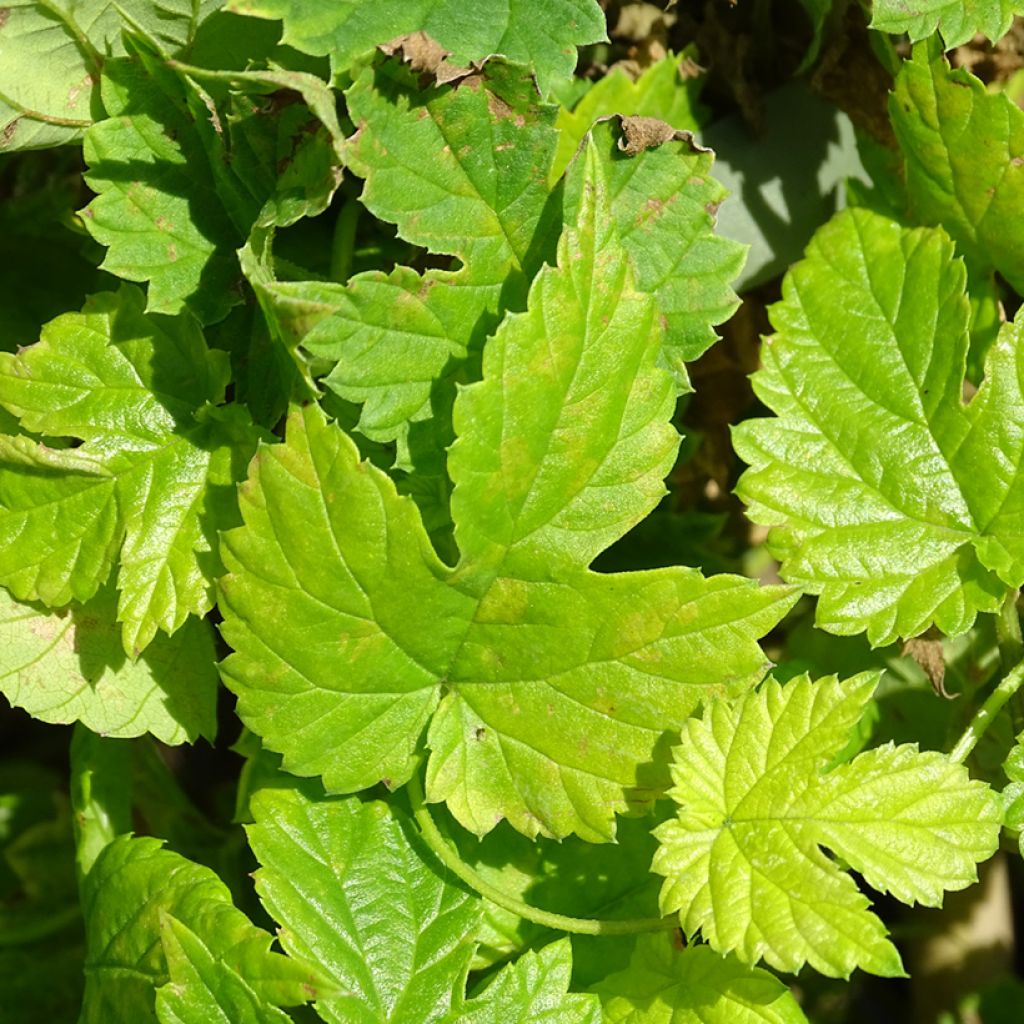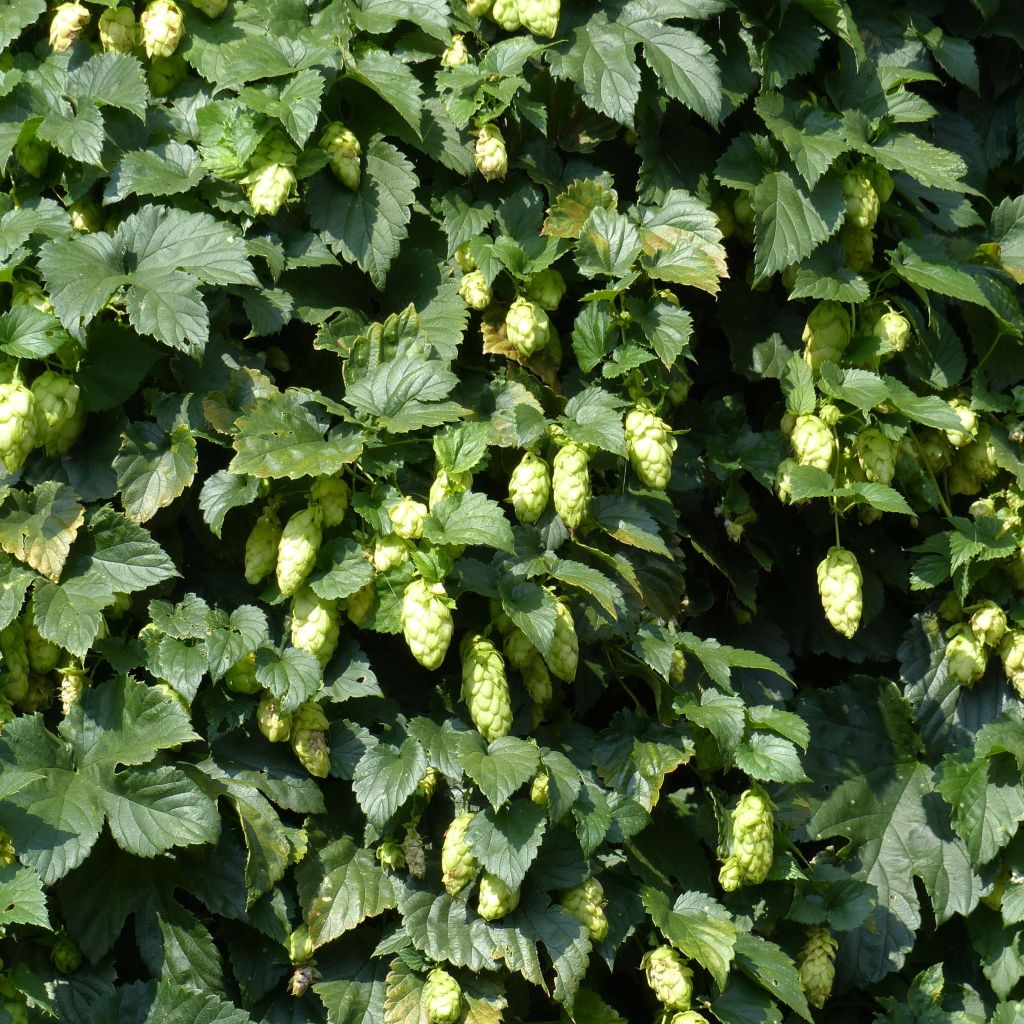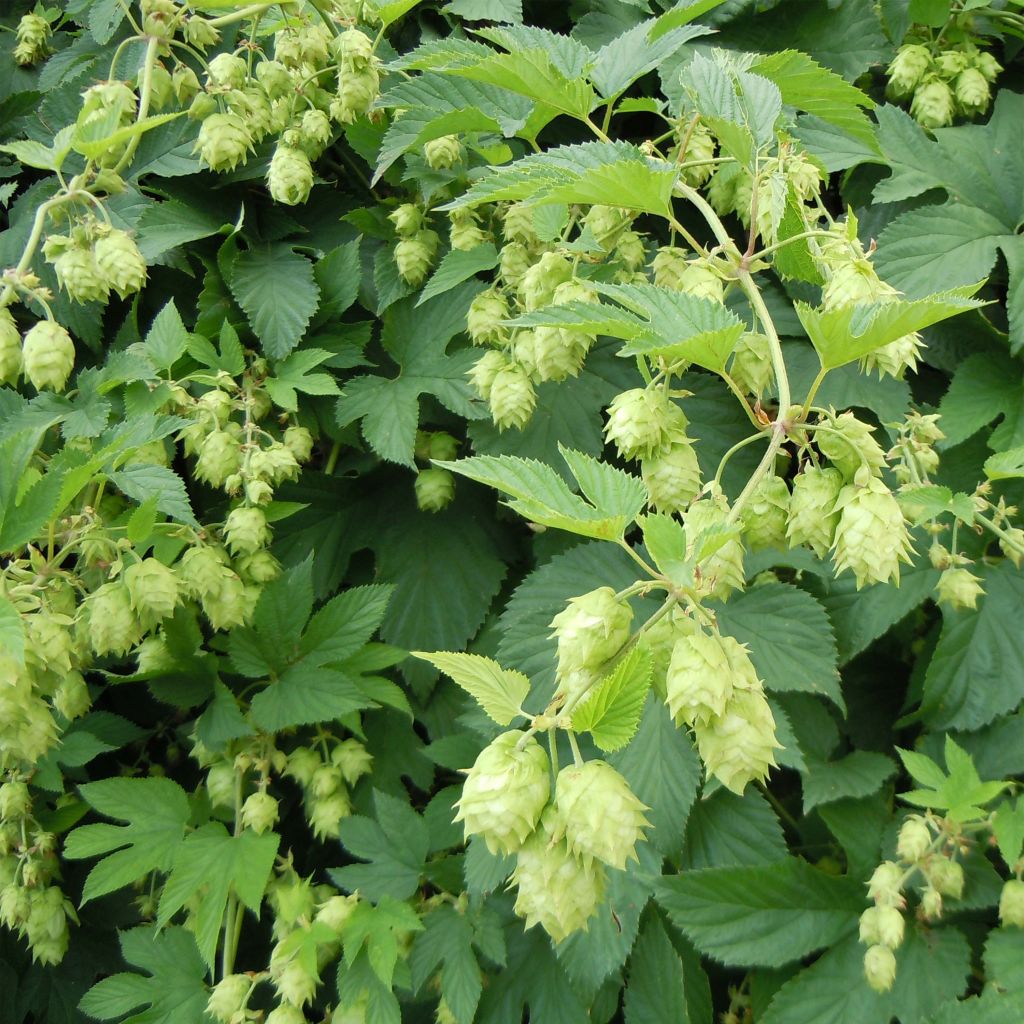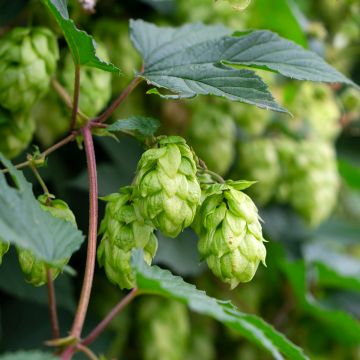

Humulus lupulus - Common Hop


Humulus lupulus - Common Hop


Humulus lupulus - Common Hop


Humulus lupulus - Common Hop
Humulus lupulus - Common Hop
Humulus lupulus
Hop, Common Hop
This item cannot be shipped to the selected country
Delivery charge from €5.90
Delivery charge from €5.90
Delivery to Corse prohibited
More information
Schedule delivery date,
and select date in basket
This plant carries a 6 months recovery warranty
More information
We guarantee the quality of our plants for a full growing cycle, and will replace at our expense any plant that fails to recover under normal climatic and planting conditions.
From €5.90 for pickup delivery and €6.90 for home delivery
Express home delivery from €8.90.
From €5.90 for pickup delivery and €6.90 for home delivery
Express home delivery from €8.90.
Delivery to Corse prohibited: UE law prohibits the import of this plant from mainland France to Corse as part of the fight against Xylella fastidiosa. Please accept our sincere apologies.
More information

Does this plant fit my garden?
Set up your Plantfit profile →
Description
Humulus lupulus, better known as hops, is a large climbing plant that is exuberant and decorative with its large light green leaves. It should be planted in a sunny position. Delivered in a pot and well rooted, this plant quickly establishes itself in the garden. It tolerates all exposures well, but prefers a semi-shady position where it excels. It is a perennial herbaceous plant with a large fleshy root that regenerates the entire vegetation each year and spends the winter underground. Hops are a dioecious plant, meaning there are male and female plants. It is the cone-shaped fruits that form in summer on the female plants that are used to flavour beer.
Humulus lupulus is a rhizomatous plant of the Cannabaceae family, native to wet areas of the Northern Hemisphere (Europe, America). Its herbaceous, rough stems emerge from the stump in spring, quickly entwining on to any support available to them. Their growth is very rapid, they grow several centimetres per day and reach over 10 m (33ft) in a season. They bear leaves measuring up to 15 cm (6in) in diameter, nicely cut into 3 to 5 ovate, pointed and crenate lobes. The male or female inflorescences, present on separate plants, appear in summer, from June to August depending on the climate. The female flowers are globular, while the male flowers are in the form of broad panicles. It is the female flowers that, after pollination by a male plant, form fruits called cones. Shaped like an egg, the cones have a scaly appearance, are golden in colour when ripe, and are covered with a fragrant and powdery resin called lupulin. They are usually harvested in September. All the aerial vegetation dries up in autumn.
In ornamental gardens, hops complement a climbing rose and pair well with a sturdy clematis with blue flowers like 'Blue Angel'. It can give a second life to an old tree, conceal a tired garden shed or an unsightly structure, and bathe a trellis or pergola on a patio in gold. Its luxuriant vegetation, of a fairly light green, brings life to semi-shady areas and adds another dimension to them. For example, consider planting hops as a backdrop for hydrangeas, or pairing it in a mixed hedge with Akebia quinata 'Cream Form'. You can also train it to climb over an arch or a tall teepee, or an ugly pylon that disfigures the garden... The flowers, harvested in September, make beautiful dried bouquets.
The female inflorescences, the cones, have been used to flavour beer since the 8th Century. Previously, hops were only used to preserve beer. Currently (despite modern preservation technologies), this tradition has remained due to the slight bitterness and flavour that hops bring. In the past, pillows were filled with dried cones to help sleep.
Report an error about the product description
Humulus lupulus - Common Hop in pictures




Plant habit
Flowering
Foliage
Botanical data
Humulus
lupulus
Cannabinaceae
Hop, Common Hop
Western Europe
Other Humulus - Hop
Planting and care
Hops are easy to grow in deep and moist soil, and tolerate all positions in the garden with a preference for partial shade. Plant hops in any good garden soil that does not dry out, and provide it with a good fertiliser at planting. It clings by itself thanks to the small hooks on the stems. Prune your plant every year to a height of 25 cm (10in), in February or March; remember to remove (and possibly replant) the suckers that would otherwise become invasive.
Planting period
Intended location
Care
-
, onOrder confirmed
Reply from on Promesse de fleurs
Haven't found what you were looking for?
Hardiness is the lowest winter temperature a plant can endure without suffering serious damage or even dying. However, hardiness is affected by location (a sheltered area, such as a patio), protection (winter cover) and soil type (hardiness is improved by well-drained soil).

Photo Sharing Terms & Conditions
In order to encourage gardeners to interact and share their experiences, Promesse de fleurs offers various media enabling content to be uploaded onto its Site - in particular via the ‘Photo sharing’ module.
The User agrees to refrain from:
- Posting any content that is illegal, prejudicial, insulting, racist, inciteful to hatred, revisionist, contrary to public decency, that infringes on privacy or on the privacy rights of third parties, in particular the publicity rights of persons and goods, intellectual property rights, or the right to privacy.
- Submitting content on behalf of a third party;
- Impersonate the identity of a third party and/or publish any personal information about a third party;
In general, the User undertakes to refrain from any unethical behaviour.
All Content (in particular text, comments, files, images, photos, videos, creative works, etc.), which may be subject to property or intellectual property rights, image or other private rights, shall remain the property of the User, subject to the limited rights granted by the terms of the licence granted by Promesse de fleurs as stated below. Users are at liberty to publish or not to publish such Content on the Site, notably via the ‘Photo Sharing’ facility, and accept that this Content shall be made public and freely accessible, notably on the Internet.
Users further acknowledge, undertake to have ,and guarantee that they hold all necessary rights and permissions to publish such material on the Site, in particular with regard to the legislation in force pertaining to any privacy, property, intellectual property, image, or contractual rights, or rights of any other nature. By publishing such Content on the Site, Users acknowledge accepting full liability as publishers of the Content within the meaning of the law, and grant Promesse de fleurs, free of charge, an inclusive, worldwide licence for the said Content for the entire duration of its publication, including all reproduction, representation, up/downloading, displaying, performing, transmission, and storage rights.
Users also grant permission for their name to be linked to the Content and accept that this link may not always be made available.
By engaging in posting material, Users consent to their Content becoming automatically accessible on the Internet, in particular on other sites and/or blogs and/or web pages of the Promesse de fleurs site, including in particular social pages and the Promesse de fleurs catalogue.
Users may secure the removal of entrusted content free of charge by issuing a simple request via our contact form.
The flowering period indicated on our website applies to countries and regions located in USDA zone 8 (France, the United Kingdom, Ireland, the Netherlands, etc.)
It will vary according to where you live:
- In zones 9 to 10 (Italy, Spain, Greece, etc.), flowering will occur about 2 to 4 weeks earlier.
- In zones 6 to 7 (Germany, Poland, Slovenia, and lower mountainous regions), flowering will be delayed by 2 to 3 weeks.
- In zone 5 (Central Europe, Scandinavia), blooming will be delayed by 3 to 5 weeks.
In temperate climates, pruning of spring-flowering shrubs (forsythia, spireas, etc.) should be done just after flowering.
Pruning of summer-flowering shrubs (Indian Lilac, Perovskia, etc.) can be done in winter or spring.
In cold regions as well as with frost-sensitive plants, avoid pruning too early when severe frosts may still occur.
The planting period indicated on our website applies to countries and regions located in USDA zone 8 (France, United Kingdom, Ireland, Netherlands).
It will vary according to where you live:
- In Mediterranean zones (Marseille, Madrid, Milan, etc.), autumn and winter are the best planting periods.
- In continental zones (Strasbourg, Munich, Vienna, etc.), delay planting by 2 to 3 weeks in spring and bring it forward by 2 to 4 weeks in autumn.
- In mountainous regions (the Alps, Pyrenees, Carpathians, etc.), it is best to plant in late spring (May-June) or late summer (August-September).
The harvesting period indicated on our website applies to countries and regions in USDA zone 8 (France, England, Ireland, the Netherlands).
In colder areas (Scandinavia, Poland, Austria...) fruit and vegetable harvests are likely to be delayed by 3-4 weeks.
In warmer areas (Italy, Spain, Greece, etc.), harvesting will probably take place earlier, depending on weather conditions.
The sowing periods indicated on our website apply to countries and regions within USDA Zone 8 (France, UK, Ireland, Netherlands).
In colder areas (Scandinavia, Poland, Austria...), delay any outdoor sowing by 3-4 weeks, or sow under glass.
In warmer climes (Italy, Spain, Greece, etc.), bring outdoor sowing forward by a few weeks.










































